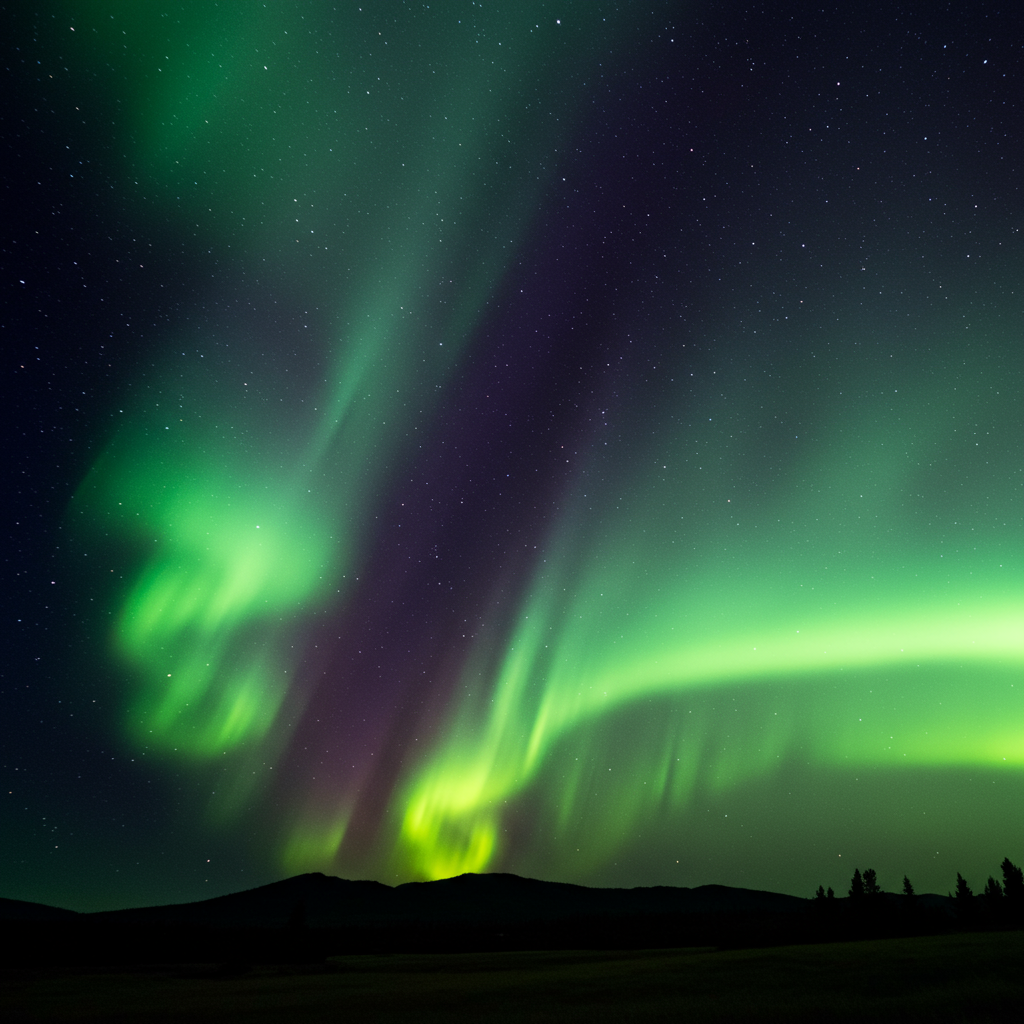Get ready, skywatchers! A potent burst of solar activity hitting Earth could ignite the skies with the mesmerizing glow of the Northern Lights across a significant portion of the United States this weekend. Experts are forecasting a geomagnetic storm capable of pushing aurora visibility much further south than usual, offering a rare celestial spectacle for millions.
What’s Causing the Aurora Alert?
The dazzling display is triggered by a geomagnetic storm, a disturbance to Earth’s magnetic field caused by fluctuations in the stream of charged particles constantly flowing from the sun, known as the solar wind.
While often initiated by giant explosions on the sun called coronal mass ejections (CMEs), the primary culprit for this weekend’s event appears to be a “co-rotating interaction region” (CIR). This turbulence forms when fast-moving solar wind streams collide with slower wind ahead of them, originating from a large “coronal hole” on the sun’s surface. This turbulent energy can squeeze Earth’s magnetosphere, setting the stage for auroras at lower latitudes. Experts also suggest recent solar activity, including a coronal mass ejection on June 8, could contribute to the disturbance.
The National Oceanic and Atmospheric Administration’s (NOAA) Space Weather Prediction Center initially predicted a G2 (moderate) geomagnetic storm, but updated forecasts indicate the potential for it to strengthen to a G3 (strong) level over the weekend. While some reports mentioned the possibility of a G4 (severe) storm, experts clarify this is unlikely and may stem from confusion with discussions about a different, earlier powerful storm. This weekend’s event, while significant for aurora viewing, is not expected to reach that extreme intensity.
Understanding Geomagnetic Storms
Geomagnetic storms are classified on a scale from G1 (minor) to G5 (extreme). Even moderate (G2) or strong (G3) storms can lead to widespread aurora displays. More severe storms, though rare, have the potential for wider impacts, including temporary disruptions to radio communications, GPS signals, satellite operations, and even minor effects on power grids. Recent exercises simulating severe solar weather have highlighted the challenges in forecasting the precise intensity and impact of such events, underscoring the need for more observational data from space.
Which States Might See the Lights?
Forecasters predict that the auroral oval could expand significantly southwards this weekend, potentially making the Northern Lights visible in parts of up to 18 U.S. states. The states with the best chance of witnessing the display are:
Alaska
Montana
North Dakota
Minnesota
Wisconsin
Michigan
South Dakota
Maine
Vermont
New Hampshire
Idaho
Washington
Oregon
New York
Massachusetts
Connecticut
Rhode Island
Wyoming
Auroras may also be visible in the United Kingdom and parts of Europe.
Tips for Skywatchers: Managing Expectations
While the forecast is exciting, seeing the Northern Lights is never guaranteed. Several factors can affect visibility, including:
Local Weather: Clear skies are essential. Cloud cover will obscure any potential display.
Light Pollution: Head away from city lights to areas with darker skies for the best chance.
Time of Night: The peak activity often occurs several hours after local sunset, usually around midnight or the early hours of the morning.
Limited Darkness in Late June: A crucial challenge this time of year is the lack of true astronomical darkness, especially in northern latitudes. The sky remains in a state of twilight for much of the night. This means that even if auroras are present, they might be less vivid to the naked eye than during darker months and could appear more as a greenish or grayish arc low on the horizon.
Given the twilight conditions, this weekend’s event might present a particularly strong opportunity for aurora photography. Cameras, especially those with long-exposure capabilities like DSLR or mirrorless cameras and even newer smartphones with “Night Mode,” can capture the colors and structure of the aurora much better than the human eye in low light. If attempting to photograph, use a tripod or stable surface, focus to infinity, and experiment with exposure times (5-10 seconds on a phone’s Night Mode can work well). Shooting in raw format can also aid in post-processing.
Context: A Period of High Solar Activity
This weekend’s event occurs during a period of heightened solar activity, as the sun approaches or is at the peak of its roughly 11-year cycle, known as solar maximum. This phase, which began earlier than predicted in 2024, is characterized by more frequent sunspots, flares, and CMEs.
The increase in activity was dramatically highlighted in May 2024 when Earth was impacted by a G5 (extreme) geomagnetic storm – the strongest in 21 years – leading to widespread auroras seen in latitudes rarely reached in centuries, along with notable impacts on GPS and satellite operations. While this weekend’s storm is not expected to be as powerful, it’s a reminder of the sun’s influence and the dynamic nature of space weather as the solar cycle nears its peak.
Keep an eye on the sky and check local space weather forecasts. With the right conditions, residents in the predicted states might just be treated to a spectacular natural light show this weekend.




